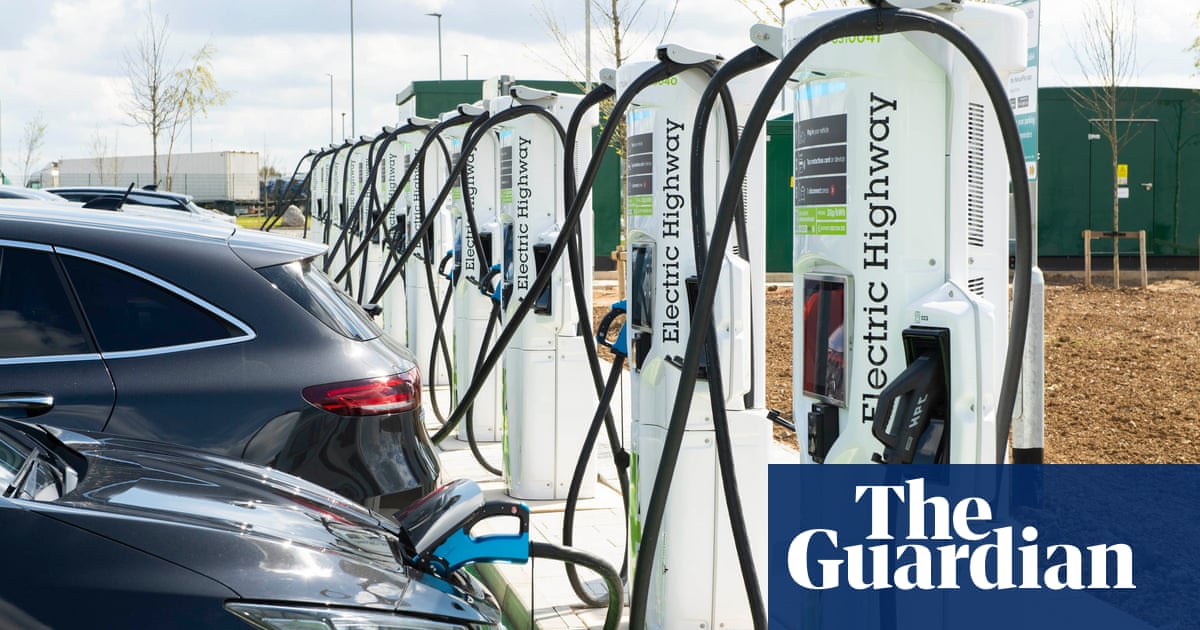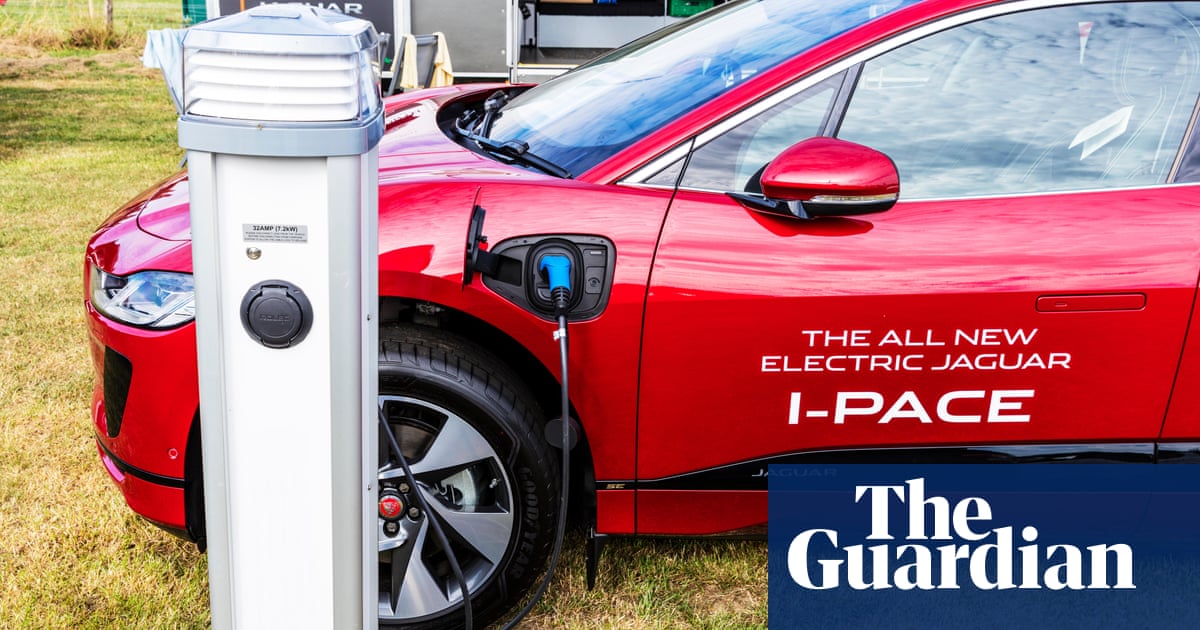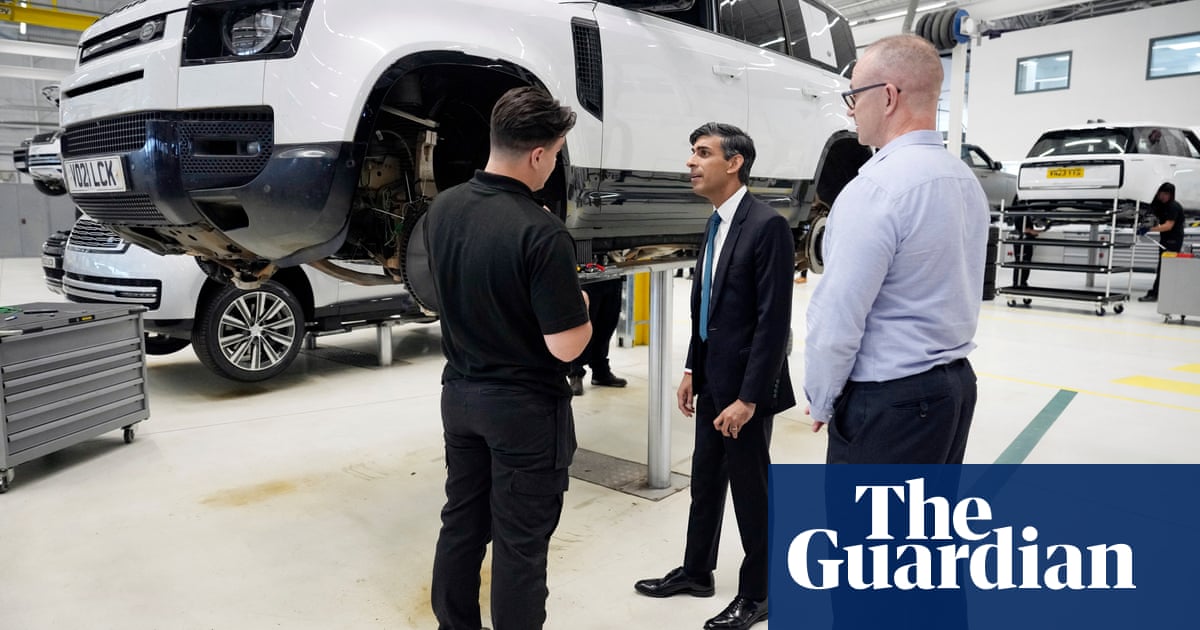
Toilets are big business on the motorway: using them is the number one reason people stop at services. But the electric car era is going to change that. The need for fast charging will soon be the key reason for visits to motorway services, says Ken McMeikan, chief executive of Moto, which operates them.
There is a problem: many of the sites lack the power needed for ultra-rapid charging. That could hold back the transition to electric cars as more and more drivers are forced to wait longer to recharge on longer journeys.
Trowell services, outside Nottingham, a busy stop on the M1 from Leeds, illustrates the challenge. Moto says the services will not gain access to the high power needed for fast charging for at least the next four or five years, and potentially longer.
The government has long known that there is a problem. In March 2020, Rishi Sunak, then chancellor, announced the £950m rapid charging fund to help to connect services to the grid. Three and a half years later, the government has not spent a penny, with competition concerns thought to be a key factor.
“The whole management of it has been laboriously slow,” said McMeikan. “I’m seriously concerned that it’s not going to happen quickly enough.
“That £1bn fund could have accelerated and guaranteed that the power was where it was going to be needed,” he said. “Time is of the essence, but you wouldn’t think that from the way the fund has been deployed – because it hasn’t been deployed.”
The UK’s first motorway, the M6 Preston bypass, opened in 1958. Motorway services were close behind: Newport Pagnell and Watford Gap were the first, according to Motorway Services Online, an enthusiasts’ website. They are part of the UK’s cultural fabric, a staple of long weekends and summer holidays, and a rare example of places where people of all classes mix.
Electric cars will mean people are likely to spend a bit more time at motorway services, particularly on longer trips. They will want more pleasant surroundings, and better coffee and snacks, while they wait a few minutes for a top-up. That has made petrol stations more attractive to investors: Moto is owned by the Universities Superannuation Scheme pension fund along with the private equity investor CVC Capital Partners.
Some of Moto’s services have already been upgraded. At Exeter, on the south-west holiday route, Moto has 50 ultra-rapid chargers, using the power equivalent of a third of the city’s homes. Yet the costs of connecting others are prohibitive. One unnamed site would require £24m for just the power connection. Compare that with the £40m total investment made in Rugby (the UK’s most popular services, according to one poll, with 40 ultra-rapid chargers now installed), or Moto’s £38m in annual profits (on turnover of £1.1bn in 2022). McMeikan says the connection cost needs to be “hundreds of thousands of pounds, not millions” to make it viable.
The data company Zapmap said there are 136 motorway service locations which have charging points, with 912 open access devices with power ratings above 50 kilowatts (kW). However, many of those will fall short of the “ultra-rapid” level of 150kW or more. The government had previously said it wanted six ultra-rapid chargers at every motorway services by the end of this year.
Melanie Shufflebotham, chief operating officer at ZapMap, said: “Whilst it is clear that the target of having six or more high-powered 150kW+ devices at all motorway service stations will not be achieved by the end of 2023, there has been significant progress and we should see the rollout speed up as the money in the rapid charging fund is unlocked. Having multiple, highly visible charging provision on the motorways is very important for EV drivers.”
At the same time, ZapMap said the number of charging hubs has doubled, particularly away from the motorway at retail locations or near A-roads.
That still leaves many motorway journeys waiting for the most convenient ultra-rapid chargers – including some where chargers are installed but still waiting for a connection. And every day more and more electric cars will fill UK roads. By 2030, each Moto site will need 40 to 50 chargers, and Moto’s car charging over a year will need the equivalent of a quarter of an average nuclear power station’s output.
“What I think has been missing is a central, strategic and fast decision-making process,” McMeikan said, adding that he was concerned that money to help install more chargers by motorways could be redirected if the launch is delayed further.
“What I’m asking for is what I should expect should be available for Moto as a business, which is power,” he said. “I’m not asking for funding.”












